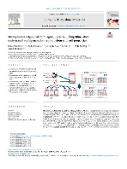Microplastics originated from agricultural mulching films affect enchytraeid multigeneration reproduction and soil properties

Author
Šmídová, Klára
Selonen, Salla
van Gestel, Cornelis A. M.
Publication date
2024Published in
Journal of Hazardous MaterialsVolume / Issue
479 (November)ISBN / ISSN
ISSN: 0304-3894ISBN / ISSN
eISSN: 1873-3336Metadata
Show full item recordCollections
This publication has a published version with DOI 10.1016/j.jhazmat.2024.135592
Abstract
Microplastics (MPs) are increasingly entering agricultural soils, often from the breakdown of agricultural plastics (e.g., mulching films). This study investigates the effects of realistic MPs from different mulching films: two conventional polyethylene (PE-1 and PE-2) and two biodegradable (starch-blended polybutylene adipate coterephthalate; PBAT-BD-1 and PBAT-BD-2). MPs were mixed into Lufa 2.2 soil at a concentration range from 0.005 % to 5 % (w/w dry soil), wide enough to reflect both realistic environmental levels and "worst-case scenarios". Effects on Enchytraeus crypticus reproduction over two generations and six important soil properties were studied. PBAT MPs notably reduced enchytraeid reproduction in the F0 generation, with a maximum decrease of 35.5 +/- 9.6 % at 0.5 % concentration. F1 generation was unaffected by PBAT contamination. PE MPs had a more substantial reproductive impact, with up to a 55.3 +/- 9.7 % decrease at 5 % PE-1 concentration compared to the control, showing a dose-related effect except for 1 %. Both MP types also significantly affected soil water holding capacity, pH, and total carbon. Other soil properties remained unaffected. Our results highlight the potential negative impacts of MPs originating from real agricultural plastics on soil health and raise concerns about the role of agricultural plastics in sustainable agriculture and food safety.
Keywords
agricultural plastics, realistic soil pollution, soil ecotoxicology, soil invertebrates, soil pH, water holding capacity, total carbon
Permanent link
https://hdl.handle.net/20.500.14178/3035License
Full text of this result is licensed under: Creative Commons Uveďte původ 4.0 International







